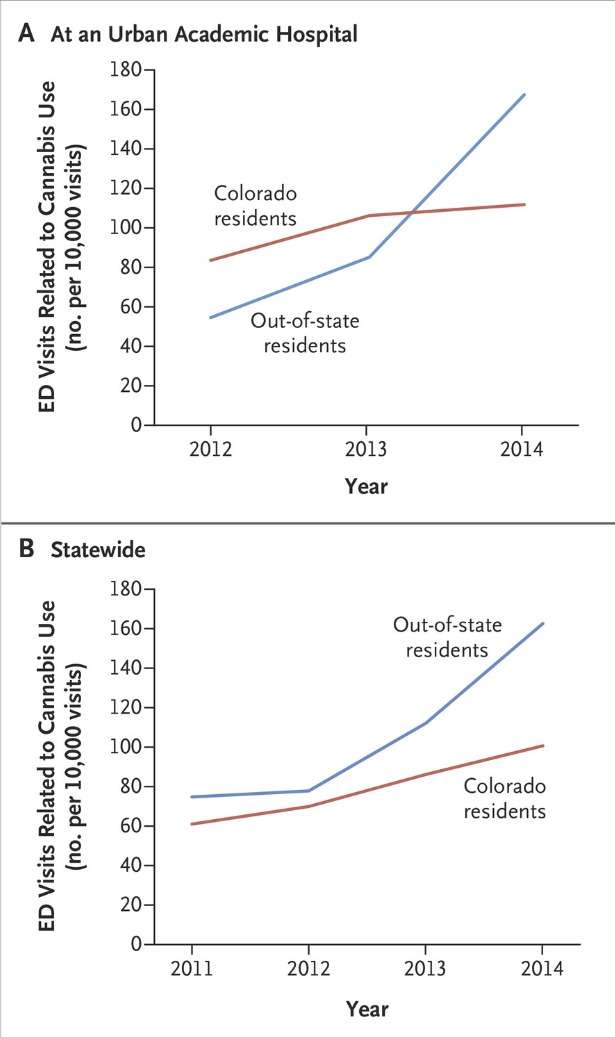Is Colorado Pot Tourism Driving an Increase in Cannabis-Related E.R. Visits?
Data from a hospital near Denver show the rate of marijuana mentions among patients from other states doubled in 2014.

According to data from a hospital near Denver, the rate of emergency room visits "possibly related to cannabis" by visitors to Colorado doubled in 2014, the first year when marijuana merchants in that state were legally permitted to serve recreational customers. The study, reported this week in a letter to The New England Journal of Medicine, found that the rate of marijuana mentions among Colorado residents stayed about the same, possibly because residents were more accustomed to cannabis products after years of medical availability.
At the University of Colorado Hospital in Aurora, there were 168 marijuana mentions per 10,000 E.R. visits in 2014 among people from other states, up from 85 in 2013. Among Colorado residents, the rate was 112 per 10,000 in 2014, compared to 106 in 2013; the difference was not statistically significant. A mention does not necessarily mean that marijuana use caused or contributed to the problem that brought someone to the hospital, and some of the increase between 2013 and 2014 may be due to increased patient candor following legalization of recreational sales.
"There's more communication between patients and providers, and of course there's just more marijuana out in the community," one of the researchers told the Associated Press. "People can come in and say, 'Hey, I've got chest pains and I used marijuana a week ago.' Now, that's got nothing to do with the marijuana."
Data in an appendix to the NEJM letter indicate that 26 percent of patient complaints were psychiatric, 27 percent were gastrointestinal, and 16 percent were cardiopulmonary. Consistent with the idea that visitors had less experience with marijuana than residents, patients from other states were more likely than Coloradans (37 percent vs. 25 percent) to have psychiatric complaints, which included anxiety and panic attacks as well as symptoms such as agitation, paranoia, and aggressive behavior. About two-thirds of the patients were men. The median length of stay was 5.8 hours; the median age was 34. There were no fatalities.
Statewide data from the Colorado Hospital Association also indicate that marijuana mentions rose more sharply among visitors from other states than among Colorado residents from 2013 to 2014, although the increase was not as dramatic as at the hospital in Aurora. In fact, the rate among out-of-state residents rose about as much between 2012 and 2013 (44 percent) as it did between 2013 and 2014 (46 percent), which seems inconsistent with the idea that the increase is attributable to pot tourists attracted by newly legal marijuana stores. Meanwhile, the rate among Colorado residents rose by 23 percent between 2012 and 2013, then by 17 percent between 2013 and 2014.
To keep these trends in perspective, note that in 2014 marijuana was mentioned during 1 percent of E.R. visits by Coloradans and 1.6 percent of E.R. visits by people from other states. "[E.R.] visits related to cannabis use appear to be increasing more rapidly among out-of-state residents than among Colorado residents," the researchers conclude. "The initial educational efforts through mass media have focused primarily on Colorado residents. These data underscore the importance of point-of-sale education for visitors regarding the safe and appropriate use of marijuana products."


Show Comments (13)